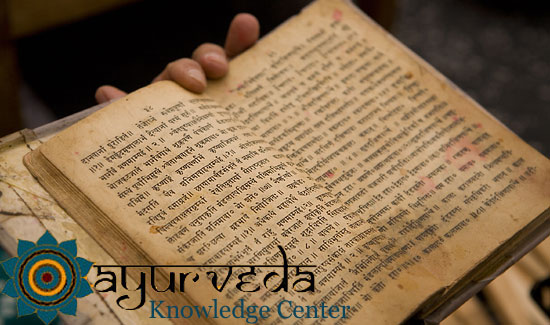Our eyes are the most important organs we have in relating to the world around us. Our eyes are the connection between the outer and inner worlds. In fact it is said that our eyes are the mirror to our soul. We must protect and take loving care of these delicate organs.
Ayurveda explains that Pitta dosha, the element of fire and light, governs our eyes. Specifically, the sub-dosha “Alochaka Pitta” lives in the eyes. Alochaka pitta absorbs images and colors, allowing us to take in and digest all of the visual impressions coming to us. When Alochaka pitta is in balance, eyes are healthy, bright, clear, shiny, luminous, and we enjoy sharp eyesight.
If pitta becomes aggravated, we can experience excess heat, anger, frustration, and liver problems. As pitta rises in a person, they become stressed, feel over worked, and eventually burnout. Impaired vision and eye problems are often related to pitta overdrive and liver imbalance. The best remedy is to keep pitta cool and calm with proper foods and daily meditation.
Tarpaka Kapha is responsible for keeping the eyes lubricated, moist and cool. Prana Vata is responsible for the life force that runs throughout the head region, for movement of the eyes, blinking, and sensory perception.
Vedic science offers many natural, safe and effective techniques to care for our eyes. The following suggestions can improve vision, reduce eye strain, and heal eye conditions.
GAZING*
Acording to ayurvedic astrology, the Sun rules the eyes. Gentle sun gazing can improve eyesight. One can softly gaze at the sun starting with 10 seconds, and increasing time by 10 second increments daily. Stand barefoot with the feet directly touching the earth. Solar gazing is only recommended at early sunrise and/or the late sunset, when harmful UV rays can not injure the eyes. Not only does solar gazing improve vision, but it activates the pineal gland, or “third eye”, clearing the mind of depressive and anxious moods.
Trataka – A very beneficial eye exercise is to meditate upon a ghee lamp flame without blinking. Gaze at the flame for 2 or 3 minutes, until tears form and clear the eyes. This stimulates ojas in the eyes, physically strengthening them. The ghee made out of cow’s milk actually draws in sattvic frequencies to calm our mind. This type of meditation allows us to reflect on our inner radiance.
*Gazing techniques should not be done during acute eye infections or glaucoma.
WASHING
Start the day by splashing some cool water on the eyes. One can also retain some cool water in the mouth while rinsing the eyes and blinking. This helps to keep Pitta in balance throughout the head region.
An Ayurvedic eye wash made out of well strained Triphala tea can be helpful in treating eye disorders. Triphala is a well-known eye tonic and anti-inflammatory. This eyewash helps with glaucoma, dissolving cataracts, conjunctivitis (pink eye), poor eyesight, sties, and red, swollen, itchy eyes.
OLEATING
Netra Basti is a restorative Ayurvedic treatment that bathes the entire eye socket in a pool of warm Ghee. This helps to cleanse the eye, soothe itchy eyes, and nourish dry eyes. The person lies down with this melted ghee covering their eye, anywhere from 5 to 20 minutes. The eyes are kept open, allowing the ghee to cool pitta and lubricate vata dosha. Netra Basti is recommended for pain and overexertion due to computer use, allergies, squinting, lazy eye, diminished vision, optic nerve injury, atrophy, and eye spasms. This treatment is especially helpful is healing emotional trauma because it is working directly on the nervous system through the eyes.
Castor oil – one drop at bedtime in the eye helps to lubricate the cornea, reducing eye strain and irritation. In India, a black eyeliner called “Kajal” made of Castor oil and burnt camphor is applied under the eyes to keep them cool. Mothers especially apply Kajal on babies to sharpen their vision, and protect their children from someone’s “evil eye”.
RESTING
Go to sleep by 10pm. One of the main causes of eye problems is lack of sleep. Without proper rest, eyes become tired, red, itchy, puffy, bleary, and bloodshot. Staying awake into the fiery Pitta hours of late night, leads to over exhaustion and burnout.
PALMING is an excellent way to give the eyes some rest when they are overstrained. Eyes need a break if they have been in front of a computer or TV screen, reading, driving, or doing close-up work, for too long a stretch. Simply rub the palms together for a few seconds and gently place them over the eyes. This provides an unbelievable deep rest that blocks out outside stimulation and helps tired, blurry eyes.
Eye Pads –Place cooling cotton pads dipped in Rose Water over the eyes, and escape for a few moments in your very own home spa. Cotton pads can be also be dipped in aloe vera, cilantro, or cucumber juices. One could even apply a paste of sandalwood powder and water on the forehead, to soothe eye strain that leads to headaches.
EATING
Foods that are rich in beta carotene (vitamin A) help improve eyesight and prevent eye conditions. Try fruits and vegetables that have a deep orange or yellow color – Carrots, winter squash, sweet potatoes, pumpkin, , apricots, peaches, cantaloupe, mangoes. Dark green leafy vegetables (spinach, kale, beet greens, Swiss chard, mustard and collard greens,) and broccoli also contain carotene.
Amalaki fruit is an anti-aging tonic or Rasayana in Ayurveda, rich in vitamin C and anti-oxidents. Amalaki is wonderful in maintaining pitta balance, and supports liver cleansing. Amala berry is specifically known as a “Chakshushya”, which means “that which strengthens the eyes”.
For Ayurvedic Consultations, Herbs, and Ayurvedic Spa Treatments, please contact:
Avani Sukhadia
Authentic Ayurveda of Sedona
www.ayurveda-sedona.com
(928)284-1114













 [contact-form-7 404 "Not Found"]
[contact-form-7 404 "Not Found"]